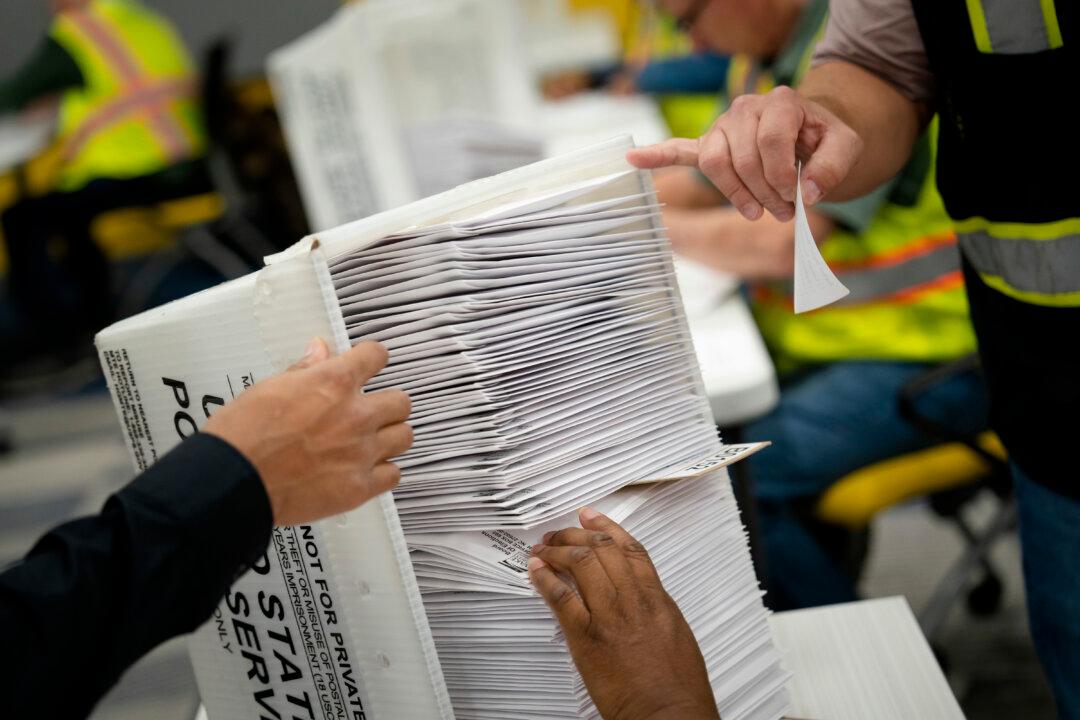Hotter-than-anticipated inflation numbers in August will likely push Social Security recipients’ payments higher in 2024, coming just weeks before the Social Security Administration releases its cost-of-living adjustment.
The Senior Citizens League said Wednesday that the likely Social Security cost-of-living adjustment (COLA) will be 3.2 percent for benefit payments in 2024. That would average out to about a $57 increase in extra benefits, raising them to about $1,790 for the average recipient, it estimated in a press release.
The 3.2 percent COLA is far lower than the 8.7 percent that was received for 2023’s payments, which was the highest increase in about four decades, according to the group. However, the estimated 2024 COLA would be higher than the 2.6 percent average over the past 20 years, it said.
In August, the league had predicted that, based on inflation, the COLA would be 3 percent. That came before the Department of Labor released its August inflation numbers.
The Social Security Administration is expected to announce the COLA for 2024’s benefits sometime in October, with the increased payments coming next January. The agency uses the Consumer Price Index (CPI) that measures inflation during the months of July, August, and September before making its decision.
Seniors Can’t Keep Up
While inflation has slowed in 2023, it has remained stubbornly high—especially when compared with much of the 2010s and 2000s.“Inflation was so severe in 2021 and 2022 that the average Social Security benefit fell behind by $1,054, leaving 53 percent of retirees doubting they will recover because household costs rose more than the dollar amount of their COLAs,” Ms. Johnson told the outlet.
Elsewhere, she noted that among recipients, there are “two different groups,” adding: “There are the planners who put money aside, maybe worked for companies that had pensions,” reported Newsweek. “They may have a 401k or worked in the military and had retiree benefits. And then there’s the other side.”
Ms. Johnson also noted that some Social Security recipients also have to pay taxes. A survey in July found that about 23 percent of respondents paid taxes on a portion of their Social Security benefits for the first time during this past tax season, and it’s likely that figure may jump due to last year’s COLA increase.
“We expect the number who pay tax on a portion of their Social Security benefits to jump even more as next year’s tax season reflects the 8.7 percent COLA increase in 2023,” she told USA Today.
Medicare Premiums
Estimated COLA figures don’t include the anticipated rise in Medicare costs, according to the group. The federal Centers for Medicare and Medicaid Services also announces Medicare premium adjustments in the fall as well.“The bottom line for retirees won’t be known until Medicare premiums are announced, which is typically in November. The Social Security Administration automatically deducts Medicare Part B premiums from Social Security benefits before the benefits are received,” the Senior Citizens League said in its release.
The group forecast that most Medicare Plan B beneficiaries will see their premium rise by approximately $15 per month as compared with 2023, according to the group. But it stipulated that “other costs” may drive monthly premiums up even more.
Rates Could Rise
The prediction comes as Federal Reserve Chairman Jerome Powell said late last month that the central bank may need to raise interest rates even more to cool still-too-high inflation, coming after it raised rates again in July.“We will proceed carefully as we decide whether to tighten further or, instead, to hold the policy rate constant and await further data,” Mr. Powell said in a keynote address in Jackson Hole, Wyoming. “It is the Fed’s job to bring inflation down to our 2 percent [inflation] goal, and we will do so.”
Since March 2022, the Fed has raised rates by 5.25 percentage points in a bid to curb inflation. “We are prepared to raise rates further if appropriate, and intend to hold policy at a restrictive level until we are confident that inflation is moving sustainably down toward our objective,” he said last month, according to Reuters.
This week, Reuters also polled economists on when exactly the Fed will start lowering rates. About 87 percent predicted that the central bank would cut rates by the middle of 2024







